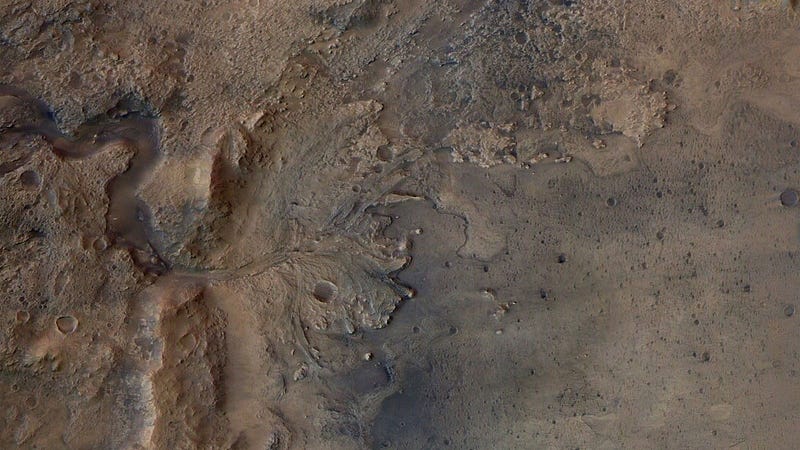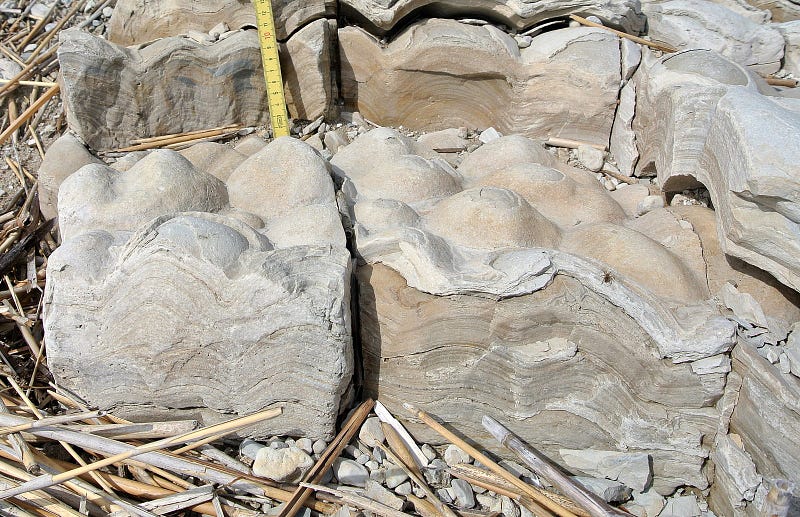# Australian Geological Breakthrough Aids NASA's Mars Mission
Written on
Chapter 1: The Martian Enigma
For centuries, humanity has gazed at Mars, envisioning it as a twin planet, potentially harboring its own form of life. Currently, we understand that if any life exists on Mars, it is extremely scarce, hidden from the planet's hostile surface conditions. However, Mars was not always this way. In its distant past, it was a hospitable environment where scientists theorize that cellular life could have emerged. This is why NASA dispatched the Perseverance rover to Mars in 2021, aiming to uncover signs of ancient life forms. A recent Australian discovery has significantly simplified Perseverance's task. What is this discovery, and how can it assist in our quest for primordial Martian life?
It's surprising to learn that Mars, with its average temperature hovering around -81°F (-62.7°C) and an atmospheric pressure merely 0.006 that of Earth's, was once a thriving, temperate world. During the Noachian Period, approximately 3 billion years ago, Mars boasted a dense, hydrogen-rich atmosphere, extensive oceans covering its northern hemisphere, and an environment with lakes, rivers, clouds, and mild volcanic activity—conditions very similar to those on Earth today. Such an environment was ideal for life not only to exist but to thrive.
Scientists are eager to determine whether life ever emerged on Mars, driven by the timeless question: "Are we alone?" If life did exist on Mars, it would suggest that other potentially habitable exoplanets are also likely to support life. Conversely, if Mars is lifeless despite having once suitable conditions, the likelihood of life elsewhere diminishes, rendering the universe far lonelier than we had hoped.

Section 1.1: Investigating Jezero Crater
To explore this question, NASA's Perseverance rover is currently examining the Jezero Crater delta on Mars. This ancient impact site was once filled with water during the Noachian Period and evolved into a lake. Over time, this lake overflowed, creating a river delta that is now a dry riverbed. The unique geology of this area makes it an excellent location for uncovering ancient rocks and geological features from the Noachian Period, including stratified cliffs and exposed bedrock.
These ancient formations may hold vital clues to Mars' past life, such as microscopic fossils resembling bacteria or larger fossils from microbial mats, known as stromatolites. Additionally, Perseverance is on the lookout for biosignatures—specific isotope ratios or compounds only generated by biological systems. However, the likelihood of finding these indicators is low, as they do not preserve well.
For Perseverance to present compelling evidence of life on ancient Mars, it must discover at least two of these indicators in a single sample. Fortunately, a team of innovative Australian scientists has been studying some of Earth's oldest rocks, providing new insights for the mission.
Subsection 1.1.1: Insights from the Dresser Formation
These researchers examined the Dresser Formation in Australia, which dates back 3.48 billion years and contains some of the earliest evidence of life on Earth in the form of stromatolites. They identified subtle potential stromatolite formations in rock layers lacking direct fossil evidence or biosignatures.

Stromatolites develop when microbial mats trap sediment, forming distinctive dome shapes that can be preserved for billions of years within sedimentary rock layers. However, many stromatolites appear subtle, making them challenging to differentiate from geological formations without additional evidence, such as biosignatures. If Mars contains stromatolites, they are likely to resemble these elusive Earth counterparts, complicating the search for proof.
By utilizing advanced imaging techniques, the Australian scientists uncovered minute structures within these potential stromatolites that indicate a biological origin. They discovered undulations in the rock surface, resembling the behavior of microbial mats as they rise to capture more light for growth. They also identified microscopic columns between rock layers, mirroring how layers of microbial mats adhere together. The simultaneous occurrence of these structures cannot be explained by geological processes alone, confirming their biological nature.
Section 1.2: Mars' Future Exploration
This development is particularly exciting because Perseverance is equipped with similar imaging technology. This means it can potentially identify stromatolites based solely on their shapes in the rock, expediting its search for ancient life. It might even guide NASA in selecting prime exploration sites within the Jezero Crater, where stromatolite preservation is more likely.
Fortunately, these Australian researchers are collaborating with NASA, and Perseverance is already implementing their findings. Although this innovative approach may hasten the search for ancient life, it could still take years before Perseverance finds any concrete evidence—if any exists at all. Nevertheless, this breakthrough will significantly contribute to answering one of humanity's most profound questions, and we can patiently await the results.
Chapter 2: The Search for Life on Mars
This video explores NASA's efforts in the Australian Outback and its implications for the search for life on Mars.
This video discusses potential signs of life discovered by NASA on Mars.